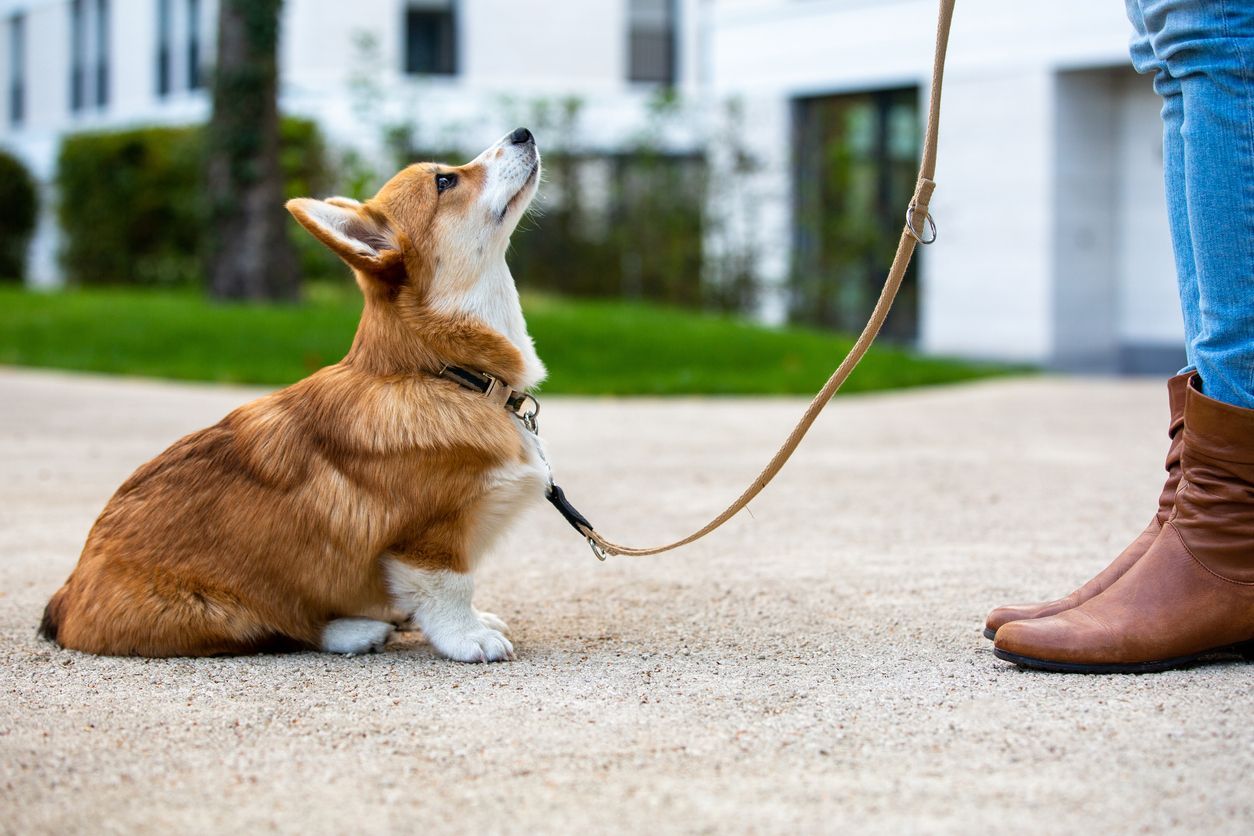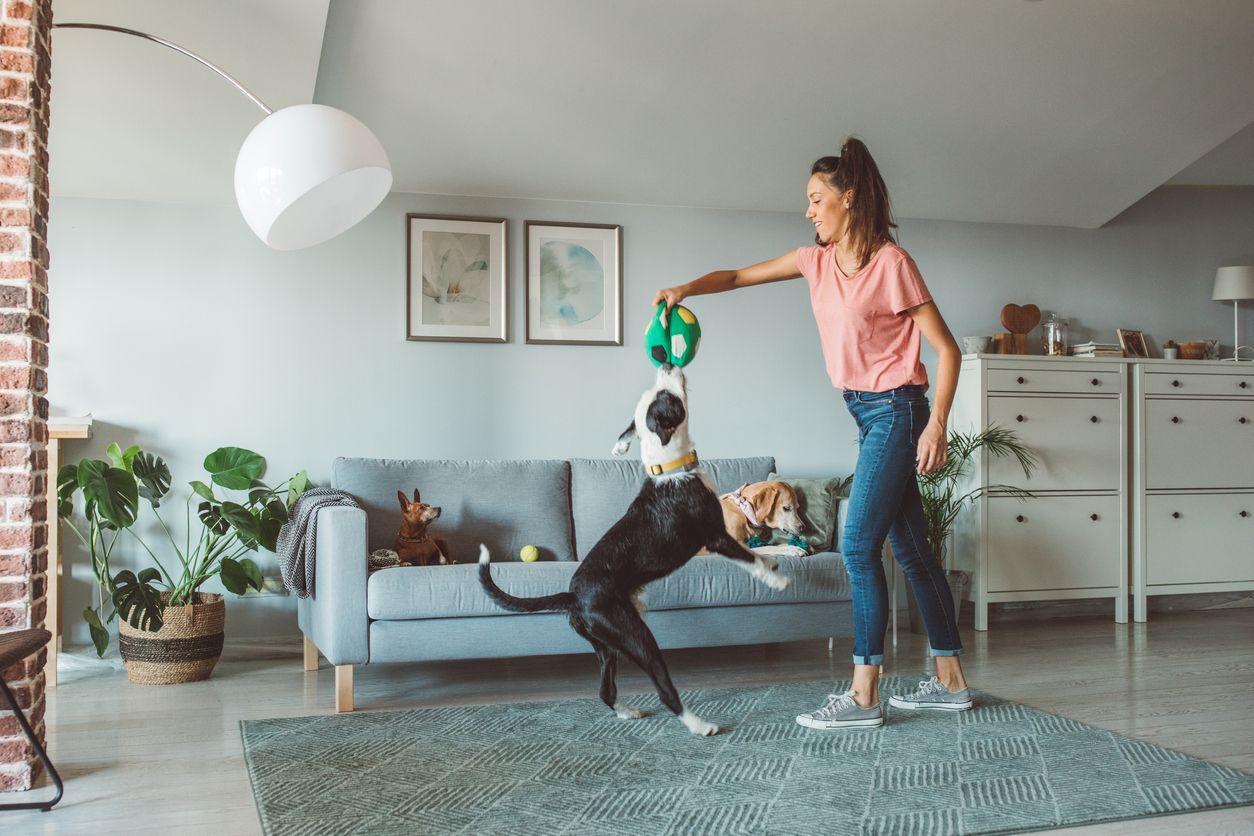How much does dog training cost?

Though some may view dog training as optional, most dogs (and their owners) benefit greatly from training sessions. Training can be a significant investment of time and money, but consistent training ensures dogs develop into obedient companions. Read on to learn:
- What are the benefits of dog training?
- What affects the cost of dog training?
- Is a dog behaviorist the same thing as a dog trainer?
- How can you choose the right dog training for your budget?
Training your dog can be a rewarding part of dog ownership, and the cost of dog training can range from as little as CAD $62 a session to as much as CAD $689 for a course, depending on the needs of your dog. Moreover, it’s much easier and more affordable to proactively set good behavioral habits, rather than treating poor ones after behavioral patterns are solidified.
What are the benefits of dog training?
Training dogs to understand basic commands, such as not jumping on people, makes them more enjoyable to be around, but also keeps both the dog and the humans around them safe. A dog jumping up on a toddler or an elderly person could cause physical harm, and sufficient training ensures you can trust them to listen to you when it really matters.
A trained dog is also less likely to end up in an unsafe situation. Calling your dog back from a busy road or commanding them to drop something that might be toxic requires strict obedience, which makes early and consistent training critical.
Lastly, one of the biggest benefits of professional training is the reduced likelihood of behavioral issues developing. Many dogs struggle with things like separation anxiety, dog-to-dog aggression, or noise phobia, and their owners may find their lives significantly impacted. Though good training does not guarantee a dog will never develop behavioral issues, it reduces the likelihood while providing owners with the tools to better control their pet.
What are some factors that affect the cost of dog training?
There is no set price for dog training and cost varies widely depending on a number of different things. Some common factors include the following:
Group training and individual training
The price of group sessions usually starts at approximately CAD $62 per dog, while the lowest cost individual class starts closer to CAD $138. The higher price of the individual sessions reflects the higher value of a one-on-one class with the instructor. Individual sessions are tailored to the client, meaning specific issues are worked on and there are no distractions from other dogs.
Length of session
The ideal session length depends on the dog and their attention span. For younger dogs, training sessions are typically short and sweet. Conversely, older dogs are able to focus for at least an hour. But remember, the longer a session, the higher the price.
Single or ongoing sessions
Booking a single session is uncommon, as dogs need time to adjust to the training methods in order to truly benefit from them. Puppies in particular need to see a trainer regularly to ensure they’re learning appropriately and all foundational training is covered.
Most trainers offer a reduced price for ongoing sessions, so buying in bulk can save you money. Single sessions are useful for older dogs with very specific issues and are usually charged at a higher rate.
Boarding
Though not as common, some owners pay to have their dog stay at a facility and receive intensive training for a set number of weeks. Boarding is usually for dogs who work in service roles, such as search-and-rescue, or who have severe behavioral issues. The cost of boarding is more than regular training sessions, as the price includes full board and food. Prices start from about CAD $689 a week and can go into the thousands.
As an alternative, dogs can also stay for the day and return home each night. This arrangement usually costs a little less and works well for those who have a busy schedule.
Continued support
Though some trainers are only available for advice during their session, others offer ongoing support in the form of emails, texts, and calls. Having a trainer on-call ensures you have access to prompt and appropriate advice at all times, and is usually for a small additional fee.
Location
Training will inevitably cost more where the cost of living is higher.
Is a behaviorist the same thing as a trainer and do they cost the same amount?
A behaviorist and a trainer have two very different roles. A behaviorist typically works alongside dogs who have behavioral issues and aims to correct their conduct and address any underlying mental health issues using techniques such as counterconditioning and desensitization.
A trainer, on the other hand, works on obedience and specialised tasks such as canine sports or work-related assignments. They teach a dog how they should act around people and other animals, and they teach owners how to handle and work alongside their pet. Behaviorists range in price similarly to trainers, and their costs are also dependent on factors like location, boarding, and individual or private classes.
Choosing the right training for your budget
It’s easy to assume the more expensive the trainer, the more worthwhile their classes are. This is not always the case, and the right trainer for one dog may not be the right fit for another.
Ensure the trainer is qualified
Make sure the trainer you choose has the appropriate qualifications and accreditations by checking professional pet training boards for references. Some of the most well-known organizations include the Certification Council for Professional Dog Trainers (CCPDT), the International Association of Animal Behavior Consultants (IAABC) and the Pet Professional Accreditation Board (PPAB).
Check reviews
Look for reviews on sites like Google or Yelp and ask around at your local dog park. References from other pet owners can help you gauge if a trainer is the right one for you. A good trainer usually has a wealth of clients who are more than happy to share their experiences.
Determine which methods you want used
There are a range of different training methods, and most trainers stick to a single method of teaching. In recent years, most owners and trainers favor positive, reward based training. This training method rewards dogs with praise and treats when they do the right thing, so they are naturally motivated to be obedient.
Prior to this, trainers sometimes used more ‘harsh’ techniques. For example, with a negative reinforcement method, a trainer may have used equipment like shock collars or squirt collars to reprimand unwanted behaviors. This sort of training is largely falling out of fashion.
Decide what you want out of the sessions
One of the most important considerations when purchasing training sessions is your end goal. You might want to improve your dog’s obedience, have them master basic commands, or better control your dog when they’re around other dogs. Whatever your goals are, discuss them with the trainer prior to starting the sessions. If you are looking to improve your dog’s general behavior but don’t know where to start, you can book an online appointment with a Vetster vet to discuss any concerns and find a focus for your trainer.
Key takeaways
Training your dog is a worthwhile investment and a necessary part of responsible dog ownership. The cost varies depending on a number of factors, such as whether you prefer group or individual classes, the location of the trainer, and the length of the session. Ultimately, a trainer who focuses on your specific goals and works well with your dog is invaluable and can give your pet the foundation for a happy, healthy life.






